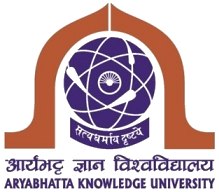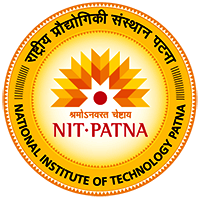ARYABHATTA KNOWLEDGE UNIVERSITY Aryabhatta Knowledge University (AKU), Patna has been established by the Government of Bihar for the development and management of educational infrastructure related to technical, medical, management and allied professional education in the state. The emblem of the university has a motif of a Mauryan era arch in brown colour, holding a drawing of an atom on a blue circle with a rising sun in the centre. Below the drawing on a banner, the motto of the of the university in Sanskrit ‘सत्यधर्माय दृष्टये’ (Verse 15, Ishopanishad) meaning ‘For the Law of the Truth for Sight’ is inscribed. The name of the university is written at the bottom in Devanagari and English. The arch denotes the State of Bihar and the Mauryan heritage; the drawing of atom denotes science and scientific temperament; the rising sun denotes light, life, energy, power, positivity and clarity; the colour brown symbolises earthiness, simplicity, stability, humility, warmth, reliabilit
,%20Patna.png)



